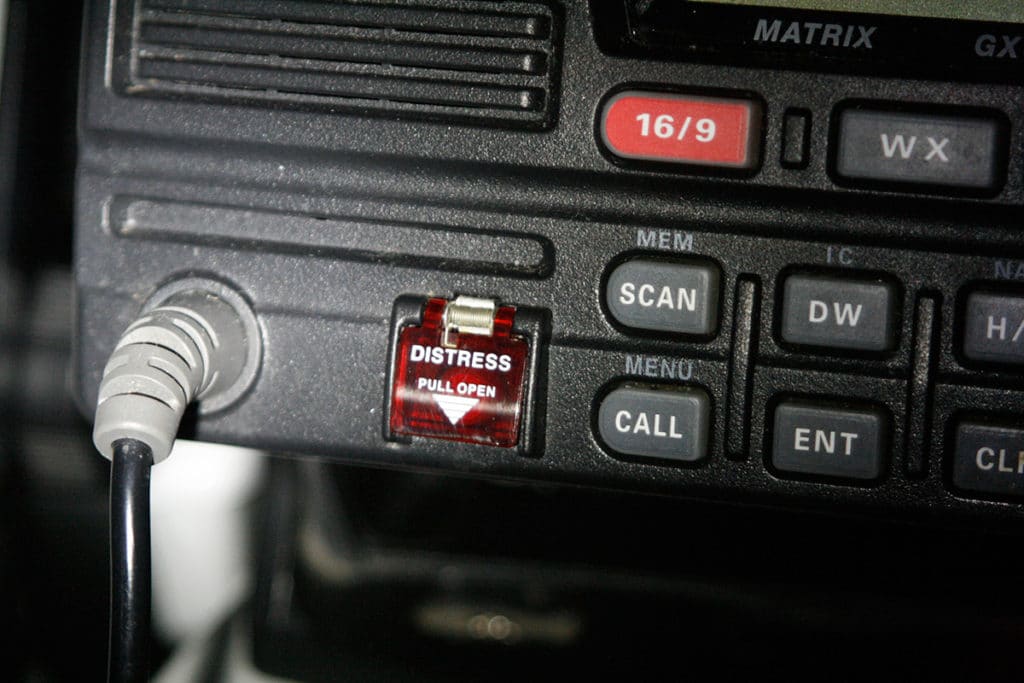
When catastrophe strikes at sea, you might not have the time or composure to place an effective mayday call (boatingmag.com/mayday-call). That’s why the DSC (digital selective calling) maritime distress and safety call system was developed for marine VHF radios. This system allows today’s VHFs to send an automated mayday that alerts the U.S. Coast Guard and other vessels.
In an emergency (and only in an emergency), press and hold the DSC distress button on your VHF radio until activation occurs.(Usually three to five seconds).This is usually a red button labeled distress under the hinged shield (to prevent accidentally pressing the button.
This will broadcast a piercing alarm and your position to other vessels and authorities within VHF range. Your ship name and position will appear on receiving radio’s display.
DSC distress is built into new fixed-mount VHFs and a few handheld models, including the new Standard Horizon HX870. Some DSC-equipped VHFs, such as the Icom M324G, also feature built-in GPS, which is needed to send your position with a distress signal. Otherwise, you need to network the VHF radio with an onboard GPS.
After sending a DSC distress, your radio will watch for an acknowledgement on Ch. 70 and also receive calls on Ch. 16. If an acknowledgement is received, select Ch. 16 and advise the caller of your emergency situation. Your VHF display will show the name of the ship responding. If no acknowledgement is received, the distress alert is repeated every four minutes.
For DSC to be effective, you also need to obtain an MMSI (maritime mobile service identity) number and enter it in the VHF ahead of time. This lets search-and-rescue teams know the size, description, registration and name of your vessel. You can obtain an MMSI for free by visiting boatus.com/mmsi
In addition to reaching authorities, a DSC distress alerts nearby boaters, who can immediately assist in the rescue effort. However, the maximum range of a VHF signal is 4 to 5 miles, depending on conditions. Also, a fixed-mount VHF and it’s DSC distress function becomes useless if your boat loses electrical power.
DSC Distress Tips
1. If you have an old VHF radio without DSC capability, buy a new one.
2. If your VHF does not have built-in GPS, make sure it’s networked with an onboard GPS receiver; otherwise the DSC distress positioning function won’t work.
3. Obtain an MMSI (mobile maritime service identity) number and enter it in your VHF; this automatically gives the Coast Guard your boat description.
4. Buy a backup handheld VHF with DSC and keep it charged, in case you lose electrical power to your main VHF during an emergency at sea.









